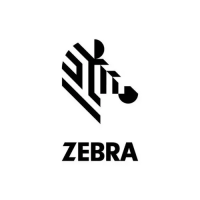
Do you have a question about the Zebra GX420 and is the answer not in the manual?
| Resolution | 203 dpi (8 dots/mm) |
|---|---|
| Print Method | Direct Thermal or Thermal Transfer |
| Max Print Width | 4.09 inches (104 mm) |
| Max Print Speed | 6 inches per second (152 mm per second) |
| Max Print Length | 39 inches (991 mm) |
| Connectivity | USB, Serial, Parallel, Ethernet (optional) |
| Media Sensors | Reflective and Transmissive |
| Programming Language | ZPL II |
| Storage Temperature | -40 to 140 degrees F (-40 to 60 degrees C) |
| Memory | 8 MB DRAM, 4 MB Flash |
G-Series serial port is cross-over null-modem, similar to ZPL-based 28-series. EPL users may need adaptors.
GX420/GX430 printers' parallel port is DB-25, supporting switchbox-style parallel cables.
Users of 28-series external print servers are advised to migrate to G-Series with internal Ethernet.
Representative icons are provided near G-Series printer interface ports and power supply to aid setup.
Unlike 28-series thermal-transfer printers, G-Series thermal-transfer models lack a lid-release catch.
Peel sensor is command-controlled (EPL/ZPL/SGD), unlike the switch on 28-series printers.
GX420/GX430 printers offer a moveable reflective sensor and multi-position transmissive sensor.
Lower media pathway has peaked areas; 3-peak for direct-thermal, 4-peak for thermal-transfer printers.
G-Series printers support both EPL and ZPL, but individual scripts cannot be merged.
GX420/GX430 feature E3 control for improved print quality and dot management.
Printer warns of printhead overheating via a solid-amber LED; this feature is not disableable.
G-Series feed-button modes follow ZPL-based 28-series for enhanced setup and use control.
Default report is ZPL-based; an EPL-based report can be output via the appropriate EPL U-command.
Two-flash sequence performs manual calibration; a seven-flash sequence provides media histogram output.
SGD constructs control media handling, odometer, and setup, offering common control methods.
Printers support Unicode and are pre-loaded with Swiss 721 font for multi-character global printing.
Default is ZPL driver; a specific EPL driver can be set up via the printer's Accessories CD.
Zebra Universal Driver (ZUD) selects TrueType/OpenType fonts; use correct ZUD for command code reference.
Converted soft fonts are stored in E: memory using fo.FNT syntax for font identifier and orientation.
EPL provides time/date stamps; use ZPL ^SL command for real-time clock updates during print runs.
Printers do not feed automatically at power-on; require lid closure or ZPL ^MF command for auto-feed.
G-Series printers are easier to load with integrated roll holders, supporting 12mm/0.5" cores.
Thumb wheel adjusts guides; inward for direct-thermal printers, outward for thermal-transfer printers.
Cutter option's default double-cycle after 25th cut is for cleaning; can be disabled via SGD command.
SGD constructs like 'media.printmode' control G-Series printers in tear, peel, or cutter modes.
Thermal-transfer models have power supplies in upper packaging; direct-thermal models have them in lower packaging.
G-Series use 24V DC (vs 28-series 20V DC) and C13 'kettle' power cables (vs C5 'clover-leaf').
The power on/off switch on G-Series printers is located on the right rear, differing from 28-series.
G-Series ribbon-sensing requires a reflective trailer on uni-ribbon format for thermal-transfer mode.
The inverted ribbon mechanism is different from 28-series thermal-transfer, enabling a quicker process.
